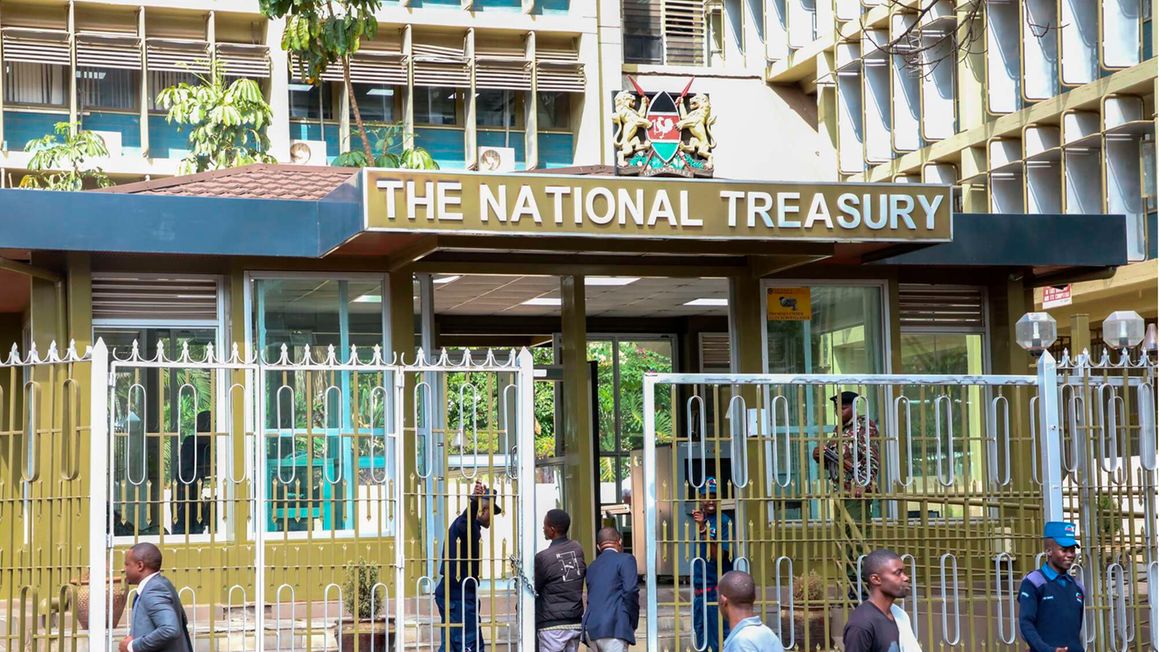
The National Treasury building in Nairobi. PHOTO | DENNIS ONSONGO | NMG
New syndicated loans the government borrowed last year have significantly increased the share of commercial external debt, which is more expensive and has a shorter maturity.
Data from the Treasury shows that external loans from commercial banks hit Sh417.73 billion in January 2024. This amounts to 6.7 percent of the country’s Sh6.18 trillion external debt.
It is a sharp rise from January last year when the loans stood at Sh286.82 billion. At that time, these commercial external loans amounted to 6.1 percent of the Sh4.68 trillion external debt at the time.
However, Kenya was last year forced to turn to commercial external loans to ease pressing liquidity challenges.
This came as a spike in interest rates triggered by the US Federal Reserve made it costly for developing countries to raise money from the global debt market.
One of these loans taken by Kenya was the $500 million (Sh66.3 billion at current exchange rates) commercial loan from a consortium of international lenders.
The government also borrowed a further $385 million (Sh51 billion) from the Trade and Development Bank (TDB).
These loans – as well as the recent issuance of a new Eurobond – have helped ease fears ahead of the $2 billion (Sh265.1 billion) bullet Eurobond payment in June.
Read: Weak shilling adds Sh809bn to Kenya external debt
But the International Monetary Fund (IMF) recently warned of the risk of Kenya’s syndicated loans binge on the profile of the public debt, stating that these loans are “are costly and of shorter maturity”.
It is due to these risks that the government is shifting to lower-priced concessional loans, especially from the IMF and the World Bank.
→ bambani@ke.nationmedia.com




No comments :
Post a Comment